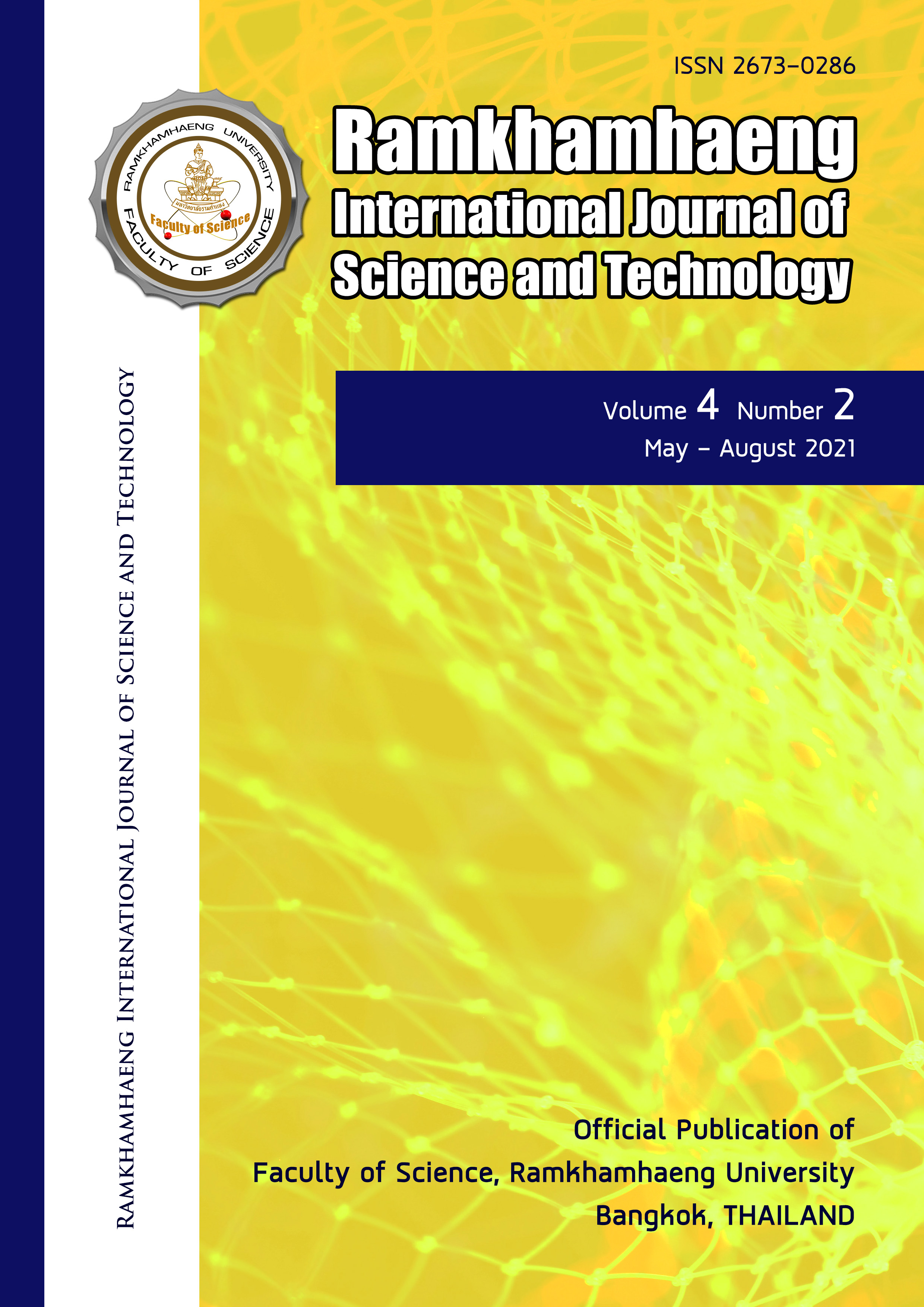Abundance of the magnificent sea anemone (Heteractis magnifica) and its marine ecotourism potential at Mu Ko Chumphon National Park, Thailand
Keywords:
marine ecotourism, Mu Ko Chumphon, management, sea anemoneAbstract
A tourism at Mu Ko Chumphon, Nationalpark is increasingly interested in both Thai and international tourists. The tourist carrying capacity at these sites is higher than the real number of tourists, therefore promoting tourism in these areas is needed. A sea anemone, Heteractis magnifica, lives in the reef areas and there are symbiotic relationships with a anemonefish, Amphiprion spp. For this reason, can be a tourist attraction for coming to Mu Ko Chumphon. The abundance of H. magnifica from eight study sites at Mu Ko Chumphon was investigated using a photo belt-transect method. Our results revealed that the H. magnifica was found in all study sites, except for Ko Kula. The highest abundance of sea anemone H. magnifica was found in Ko Ngam Yai (5.15±0.30 ind./m2), while the lowest coverage was found in Ko Mattra (0.09±0.02 ind./m2). Besides, Ko Ngam Yai showed high abundance of anemonefish, Amphiprion perideraion (18.33 ind./m2). Ko Ngam Yai and Ko Ngam Noi are suitable for snorkeling and SCUBA due to thier high live coral cover and high diversity of macrofauna and fishes in these areas that can be attractive sites for tourism. Our study provides a baseline of data in those areas that can be applied to tourism management strategies and tourism promoting at Mu Ko Chumphon.
References
Bongaerts P, Bridge TCL, Kline DR, Muir PR, Wallace CC, Beaman RJ, Hoegh-Guldberg O (2011) Mesophotic coral ecosystems on the walls of Coral Sea atolls. Coral Reefs 30:335
Brueggeman P (1998) Cnidaria—Anthozoa: Anemones, soft coral: Underwater feld guide to Ross Island and McMurdo Sound. Antarctica, The National Science Foundation.
Dayton PK, Robilliard GA (1970) Benthic faunal zonation as a result of anchor ice at McMurdo Sound, Antarctica, vol 1. Academic Press, London
Department of National Parks, Plant and Wildlife Conservation (2021) Tourism Statistics 2021. http://portal.dnp.go.th/Content/nationalpark?contentId=20014 (In Thai)
Dunn DF (1981) The clownfish sea anemones: Stichodactylidae (Coelenterata: Actiniaria) and other sea anemones symbiotic with pomacentrid fishes. Transactions of the American Philosophical Society. 71: 1–115.
English, S.,Wilkinson, C., & Baker, V. (1997). Survey Manual for Tropical Marine Resources. Australian Institute of Marine Science (AIMS). Townsville. Australia.
Fautin DG, Allen GR (1997) Anemonefishes and their host sea anemones. Revised edition. Perth: Western Australian Museum.
Fautin DG. (1985) Competition by anemone fishes for host actinians. In Proceeding of Fifth International Coral Reef Congress, Tahiti. 5: 373–377.
Fautin DG. (1986) Why do anemonefishes inhabit only some host actinians? Environmental Biology of Fishes. 15: 171–180.
Glynn PW (1996) Coral reef bleaching: facts, hypotheses and implications. Global Change Biology. 2:495–509
Mariscal RN (1972) Behaviour of symbiotic fishes and sea anemones. In Behaviour of marine animals, vol. 2, 1st (eds HE Winn, BL Olla), pp. 327–361. New York, NY: Plenum Press.
Ministry of Tourism and Sports (2021) Tourism Statistics 2021. https://www.mots.go.th/more_news_new.php?cid=628
Riegl B, Piller WE (2003) Possible refugia for reefs in times of environmental stress. International Journal of Earth Sciences 92:520–531
Robertson DR, Polunin NVC (1981) Coexistence: symbiotic sharing of feeding areas and algal food by some coral reef fishes from the Western Indian Ocean. Marine Biology 62: 185–195.
Shick JM (1991) A functional biology of sea anemones. In: Calow P (ed) Functional biology series. Chapman & Hall, Melbourne.
Shuman CS, Hodgson G, Ambrose RF (2005) Population impacts of collecting sea anemones and anemonefish for the marine aquarium trade in the Philippines. Coral Reefs 24:564–573
Sebens KP (1980) The regulation of asexual reproduction and indeterminate body size in the sea anemone anthopleura elegantissima (brandt). Biological Bulletin. 158(3):370-382.
Sebens KP (1981) The allometry of feeding, energetics, and body size in 3 sea-anemone species. Biological Bulletin 161:152–171.
Sutthacheep M, Chamchoy C, Pengsakun S, Klinthong W, Yeemin T (2019) Assessing the Resilience Potential of Inshore and Offshore Coral Communities in the Western Gulf of Thailand. Journal of Marine Science and Engineering. 7 (408); doi:10.3390/jmse7110408
Sutthacheep M, Yeemin T, Yoocharoen M, Phantewee W, Suebpala W, Chamchoy C, Putthayakool J, Aunkhongthong W (2018) Potential of ecotourism development at some coral reefs and underwater pinnacles in Chumphon Province. In The Proceeding of the 44th Congress on Science and Technology of Thailand. Bangkok.
Downloads
Published
Issue
Section
License
Copyright Notice: a copyright on any article in the published journal is retained by the Ramkhamhaeng International Journal of Science and Technology. Readers or Users grant the right to use of the Article contained in the Content in accordance with the Creative Commons CC BY-NC-ND license and the Data contained in the Content in accordance with the Creative Commons CC BY-NC-ND.



